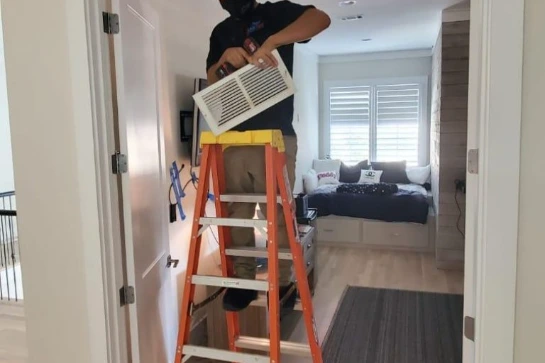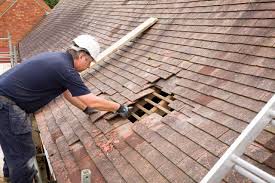Maintaining indoor air quality is important for keeping our homes healthy and comfortable. Bad air quality can cause problems like allergies, breathing issues, and tiredness. If you are in Duluth, choose MMI Home Improvement Pro for Indoor Air Quality Testing in Duluth for reliable service. Here, we will explain simple ways to help you maintain good indoor air quality. By following these tips, you can enjoy cleaner air and feel healthier.
How Can We Maintain Indoor Air Quality?
Indoor air quality refers to how clean or polluted the air is inside your home or any building. Also, poor air quality can make it harder to breathe, and it may even cause health issues. That’s why it’s important to keep the air clean. For the best Indoor Air Quality Testing, trust MMI. Here are some simple ways you can improve and maintain the air quality inside your home.
Let Fresh Air In
One of the easiest ways to improve air quality is by letting fresh air into the room.
- Open Windows: Whenever the weather allows, open windows to let fresh air in and get rid of stale air. Also, this helps to remove dust and other particles from the inside.
- Use Exhaust Fans: In places like the kitchen or bathroom, use exhaust fans to help get rid of smells and moisture.
- Use Air Purifiers: If your room doesn’t have windows, you can use an air purifier. These devices help clean the air by removing dust and pollen.
Control Humidity
The amount of moisture in the air, called humidity, affects air quality. Too much humidity can cause mold to grow, while too little can make the air feel dry.
- Use a Humidifier: If the air inside is too dry, especially during winter, a humidifier can add moisture, making it easier to breathe.
- Use a Dehumidifier: In humid places, a dehumidifier can reduce moisture levels and prevent mold from growing.
- Fix Leaks: If there are leaks in pipes or windows, it can cause extra moisture, which might lead to mold. Make sure any leaks are repaired quickly.
Clean Regularly
A clean home can help improve indoor air quality. Also, dust and dirt can collect on surfaces, causing the air to become polluted.
- Vacuum Often: Regularly vacuum carpets and floors to remove dust and pet hair. Also, try to use a vacuum cleaner with a HEPA filter, which traps small particles.
- Dust Surfaces: Wipe down furniture, shelves, and other surfaces with a damp cloth to prevent dust from becoming airborne.
- Wash Bedding: Wash your bedding, curtains, and other fabrics regularly to remove dust mites and pollen.
Change Air Filters
Air conditioning and heating systems use filters to trap dust and allergens. It’s important to change these filters regularly.
- Replace Filters: Change your air filters every 3 to 6 months. A dirty filter can block airflow and allow dust and dirt to build up in your home.
- Use Good Filters: Consider using HEPA filters designed to capture smaller particles like mold spores and pollen.
Use Safe Products
Many household products, like cleaning supplies and air fresheners, contain chemicals that can make indoor air unhealthy.
- Choose Natural Cleaners: Look for cleaning products labeled as natural or eco-friendly. These products usually contain fewer chemicals that can harm the air.
- Avoid Aerosol Sprays: Instead of using spray cans, try using pump bottles or solid air fresheners. Aerosols release chemicals into the air that aren’t good for breathing.
- Ventilate After Painting: If you paint a room or use products with strong smells, open windows or fans to let out the fumes.
Keep Pollutants Out
It’s important to stop harmful substances from entering your home or classroom to maintain indoor air quality.
- Don’t Smoke Indoors: Smoking indoors is one of the worst things you can do for indoor air quality. If someone smokes, they should do it outside to avoid polluting the air inside.
- Take-Off Shoes: Shoes can track dirt, chemicals, and other pollutants from outside. Also, leave shoes at the door to keep your indoor space clean.
- Use Houseplants: Some houseplants can help improve air quality by absorbing pollutants and releasing oxygen. Also, plants like spider plants and peace lilies are good choices.
Test for Radon and Carbon Monoxide
Radon and carbon monoxide are glasses that can be harmful to your health. Also, radon is a gas that comes from the ground and can sometimes get into homes. Carbon monoxide is a gas that comes from burning fuel in heaters or cars.
- Test for Radon: You can buy a radon testing kit to check if your home has radon. If there’s a lot of radon, you may need to get a system to get rid of it.
- Use Carbon Monoxide Detectors: Make sure your home has carbon monoxide detectors, especially near bedrooms. These devices will alert you if dangerous levels of carbon monoxide are in the air.
Summary
Maintaining indoor air quality is important for keeping our homes and classrooms healthy. By following these expert tips: letting in fresh air, controlling humidity, cleaning regularly, and using safe products, you can make sure the air you breathe is clean. Also, It’s important to check for harmful gasses like radon and carbon monoxide and keep your heating and air systems in good condition. So, by taking these steps, you will enjoy fresher air and a healthier living environment.




